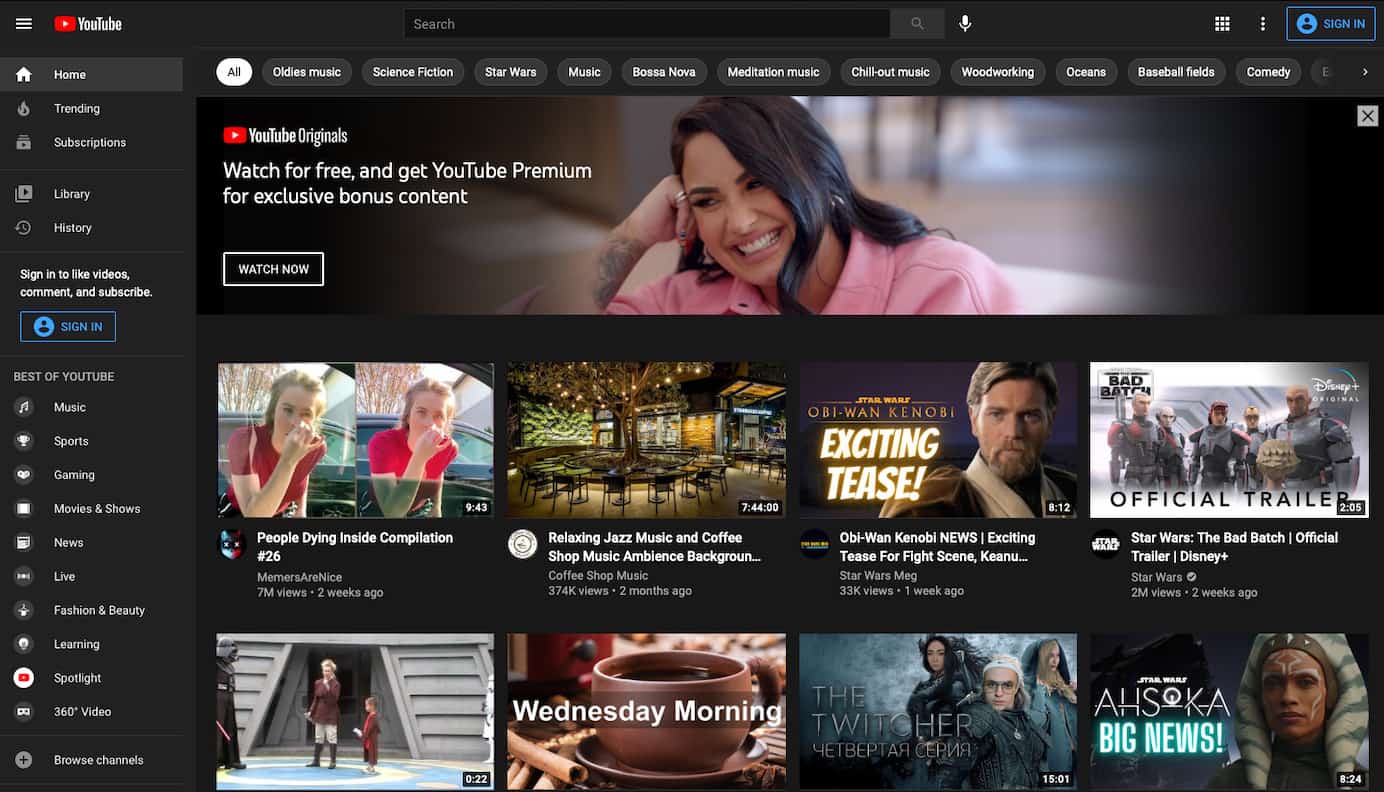When it comes to content marketing, the blog vs vlog comparison is easy to make. Both are similar as they revolve around forming a high-quality content strategy. However, the two terms are different in the way they describe the type of content you’re delivering.
Besides the manner of delivery, there are also some differences between blogs and video blog posts with how you can monetize them.
Ready? Let’s start.
Blog: A Digital Diary
Individual bloggers started blogging by keeping online diaries or journals. Nowadays there’s a blog type for just about any topic.
A blog is a combination of the words “web” and “log,” with “weblog” eventually being shortened to just “blog.” Over the years, blogs slowly became a way for brands and businesses to share their expertise online and market their products, services, and other offers.

These days, both large corporations and small businesses turn to blogging to create original content as a form of digital marketing for their followers and potential customers.
Blogs empower brands to show their customers they understand their problems and position their services or products as the perfect solution for that problem.
Blogging also empowers businesses to share a behind-the-scenes look into their process and the people behind the brand. By sharing this information, they can connect with their audience and build a deeper relationship of trust, which makes it easier to sell their offers.
You don’t need a lot to start a blog. All you need are blog topics you’re passionate about, a domain name, and a hosting plan with WordPress (or another blogging platform) installed.
Once you’ve got those in place, you need to decide how often you’ll publish blog posts and stick to a consistent schedule of posting blog content. You also need to determine if you’re publishing a personal blog or a corporate one.
Vlog: A Digital Video Diary
Vlog stands for a video blog or video log. As the name suggests, a vlogger is essentially a video blogger with their blog presented in video format instead of written.
With a vlog, instead of writing out your blog post, you’ll record yourself talking about it. Typically, vlogs are published on YouTube, Vimeo, or even IGTV.

However, some vloggers will also embed their vlogs on their website or social media and include a transcript, thus capitalizing on both the power of blogging and vlogging at the same time. Vloggers might also offer their videos as podcasts, or vice versa.
Vlogging empowers you to build trust faster because your audience can hear and see you while they watch your blogs. They can connect with your brand emotionally and feel like they know you.
That said, vlogging generally requires more work than blogging.
While it’s true that you don’t need to worry about buying a domain name and setting up a website (unless you want to republish your vlogs on your website), you need to come up with a script, record your video content, edit the video, and then publish it to a YouTube channel or other platform.
That means you’ll need to learn how to edit the videos or outsource them to someone who has the required skills. You also need to invest in a microphone and webcam to ensure your video has decent audio and video quality.
So, there are a few more costs associated with starting a vlog than there are with starting a blog. Add to that the fact that you might also need to learn how to edit your video, and it’s easy to see how a vlog can be more demanding than a blog.
Blog vs Vlog Differences: Which Offers Better Income Potential
A blog and vlog together empower you to monetize your content and make a decent income.
However, keep in mind that it takes a while to build your audience to be able to generate meaningful income. That said, there are different ways to monetize a blog vs vlog.
Let’s take a look at how you can make money blogging and vlogging below.
How To Make Money Blogging
There are multiple ways to make money with your blog. 
These include:
- Placing ads on your blog from various advertising platforms and networks. The most famous advertising network is Google AdSense. A few others include Mediavine, Media.net, Amazon Associates, and Taboola. However, you’ll need a significant amount of search engine traffic through excellent search engine optimization (SEO) to earn a meaningful income from ads. That’s why this method works best when combined with the others mentioned below. Even so, ads are easy to integrate with most blogging platforms.
- Writing sponsored posts and reviews. You can start by writing reviews of products you use and transition into pitching brands, offering them a sponsored post when you grow your audience. Or, create a page on your website with details about sponsored posts and let the brands approach you. The best part about it is that you can set your rate for sponsored posts and be in charge of how much you make.
- Selling your own physical or digital products. You can use plugins like WooCommerce or Easy Digital Downloads to start selling your products and accept credit and debit card payments on your website.
- Making money as an affiliate marketer. Similar to sponsored posts, affiliate marketing involves writing about products and services you’re affiliated with. You’ll get an affiliate link that you’ll place in your blog posts, and every time someone uses that link to make a purchase, you’ll earn a fixed commission.
To earn money from your blog, you can start with just one of the methods listed here, or you can combine several methods for more income opportunities.
For example, ads and affiliate marketing are the easiest ways to get started, but you need an audience before you’ll start seeing consistent income from them.
If you decide to sell products on your website, it’s easier to get your audience to buy them as they’re already on your website. Your users can consume your content and support you at the same time.
How To Make Money Vlogging
As far as vlogging goes, it primarily relies on ads in the video as well as sponsors. Publishing YouTube videos empower you to become part of its advertising network and add monetization to your videos with ads that play at the beginning, during, or end of your video.
If your content is popular within its niche and has a decent number of subscribers, brands related to your industry may also approach you and offer sponsorship. In other words, companies will pay you to talk about their product or service.
The more subscribers you have, the more money you can charge for a sponsored video.
While video ads and sponsored videos are the primary ways of making money through vlogging, that doesn’t mean those are your only options. You can promote your products and services, but you’ll be sending people off the native platform, so it might not be as easy as selling products on your blog.
As with blogging, you can make money online by promoting affiliate products and services in your videos. Instead of adding the affiliate link to a blog post, you can simply add it to the video description.
Also, similar to blogging, if you want to monetize your vlog, you can combine several money-making methods to create a varied video marketing strategy with different sources of income and earn a decent living.
How Advertising on Blogs and Vlogs Work
Now that you know how to make money with your blog or a vlog channel, let’s talk about how advertising on a blog vs vlog works.
As mentioned earlier, you can use various ad networks to place ads on blogs. You can include ads in multiple places, such as your blog’s header, in the middle of the post, or the sidebar. You can also sign up for multiple ad networks and see which one gives you the best payout.
How you earn money varies depending on the network you use. Typically, you’ll get paid either for a click on the ad or an ad impression.
Keep in mind that too many ads on your blog can be off-putting to your readers, so don’t go overboard.
Another downside of having ads on your blog is that you don’t have a lot of control over what ads display. That means your potential audience might see an ad that’s irrelevant to your blog and not click on it.
If you’re participating in YouTube vlogging, know that YouTubers are limited to Google’s publishing network or MCNs (multi-channel networks).
Ads can be placed at the beginning, end, or during the video. You earn money depending on the number of views the ads receive. According to different sources, advertisers pay between $0.10 to $0.30 each time an ad is viewed, and Google pays you 68% of that, taking a cut of 32% of the AdSense revenue.
It’s worth mentioning that you can filter ads that appear on your vlog channel. For example, you can block certain ads from appearing on your videos. However, you cannot choose which ads you want to show.
How Sponsorships on Blogs and Vlogs Work
Another way to make money with a blog vs vlog is through sponsorships. You can create sponsored posts for your blog or a sponsored video for your vlog.
On top of needing to build a blog audience first, you’ll need to build relationships with brands. Once you have a relationship with a brand, they are more likely to check out your content and approach you about sponsoring you.
While some companies may approach you out of the blue, you may need to pitch a brand directly before you can start working with them.
No matter how the collaboration between you and the company came to be, you’ll typically receive the brand’s guidelines about the product and what they want you to say. These are known as talking points, which outline the specifics about what the product does and who it’s meant for.
Follow the brand’s guidelines and explain to your audience what’s unique and good about the product but remember to stay truthful and objective. Don’t accept sponsorships just for the sake of money if you don’t truly support or believe in the brand and its product.
Remember, you don’t want to praise the product if it’s bad as your audience will be more likely to buy it if you recommend it. Imagine how disappointed they would be if you promote products that are not as good as your vlog or blog implied.
In the long run, this can damage your brand reputation and cause your audience to lose trust in you. This can then lead to other companies not wanting to work with you.
One last thing to remember about sponsorships for a blog vs vlog is that the bigger your audience is, the more you can ask to be paid.
While some brands will have a budget in mind, you can always try to negotiate a better rate, especially if your audience is very engaged and you have the stats and data to prove it.
Final Thoughts: Blog vs Vlog: Side By Side Comparison
There are many vlog and blog similarities to unpack. A blog vs vlog are both viable means to create content, establish your authority, and demonstrate your expertise on a particular topic.
Both blogging and vlogging give you ample opportunities to monetize your content, but keep in mind vlogging is slightly more demanding than blogging and can require a lot of time to perfect.
Additionally, there are some key differences in how you monetize both since there are more advertising opportunities for a blog, but you can make money through each method.
In the end, the choice of whether to start a blog vs vlog depends on you, your personal preferences, and how much time and money you have to dedicate to content creation.
Here’s a quick overview of blog vs vlog differences:
| Category | Blog | Vlog |
|---|---|---|
| Basics | Written content | Video content |
| Platform | Any blogging platform, such as WordPress, Wix, Joomla, Tumblr, etc. | Platforms like YouTube, Vimeo, Viddler, Flickr, IGTV, Facebook, etc. |
| Equipment needed | A domain name, hosting, CMS | Microphone, webcam, video editing software |
| Monetization Options | Ad placing, affiliate marketing, writing sponsored posts and reviews, online store | Ad placing, sponsorship, affiliate marketing |
| Cost | Less expensive | More expensive due to equipment used |
| Difficulty Level |
If you need help figuring out the specifics, you can always read more from our in-depth walkthroughs and tutorials for setting up websites.
0 comments